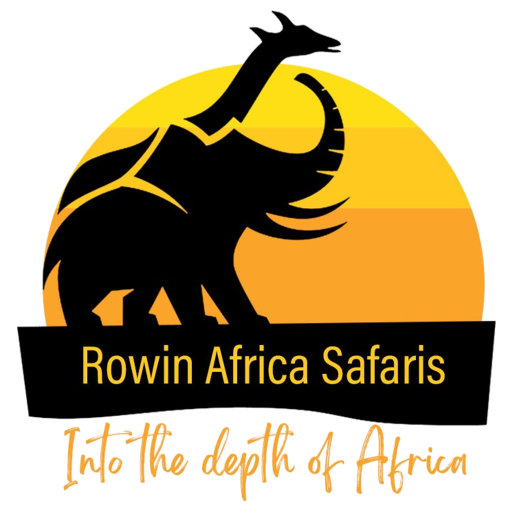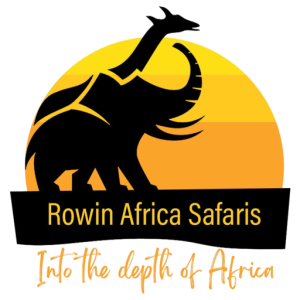The second-largest national park in Tanzania and all of East Africa is Ruaha National Park, one of the most well-known wild areas. The leisure area, which spans a total of 20,226 square kilometers and includes Zambian Miombo, acacia forests, marshes, Riverine forests, and savannah flora, is located in the center of Tanzania. These natural habitats act as a haven for a variety of animals and birds.
Attractions of Ruaha national park
Wildlife
Elephants, lions, bison, giraffes, hippos, zebras, impalas, elands, more prominent kudus, smaller kudus, roan and sable pronghorns, bat-eared foxes, jackals, hunters like lions, panthers, cheetahs, and wild canines are just a few of the numerous wild life species found in Ruaha National Park. Also, the recreation area is home to a variety of reptiles and aquatic animals, including crocodiles, screen reptiles, agama reptiles, frogs, and dangerous and non-toxic snakes.
Birdlife
More than 570 different kinds of birds call Ruaha National Park home, including endemic, almost endemic, transitory, and other species that are frequently seen in the leisure area. A portion of these bird species incorporate; Giant kingfisher, Goliath heron, Ashy starling, Emerald-spotted wood dove, Southern ground hornbill, peaked barbet, Yellow-captured lovebird, Black-bellied bustard, ashy starling, Bateleur, Tanzanian red-charged hornbill, African fish hawk, nabbed palm-thrush, Spur-winged goose, caught palm-thrush, Long-peaked falcon, Yellow-apprehended lovebird and a lot more effortlessly seen in the savanna forest.
Vegetation
Semi-arid vegetation, which is one of the park’s tourism attractions, predominates in Ruaha National Park. Around 1650 plant species, including baobab and acacia trees, make up the vegetative cover. The Miombo vegetation zone, which is characterized by miombo vegetation, and the Sudanian vegetation zone, which is characterized by acacia vegetation, meet in Ruaha National Park.
The River Ruaha is one among the prime tourist destinations of the park but the source of the parks name. The Ruaha River flows through the Usangu fields and supplies water to the ranchers nearby. It also serves as a source of water for the park, keeping the recreation area moist during the dry months. Throughout the dry months, certain wild animal species may be observed congregating along the waterway’s borders to quench their thirst. The stream Ruaha also delivers water to the dam, which is used to generate hydroelectricity for Tanzanians and others.
Historical sites
Due to its few socially acceptable and provable locations, Ruaha National Park is often believed to be an ancient landscape that contains many of boss Mkwawa’s secrets. Among the social locales that were used for traditions are Ganga la Mafunyo, Painted Rock at Nyanywa, Nyanywa and Chahe, Gogo Boss Mapenza Grave at Mpululu, and Mkwawa Spring Area, which was rumored to have been used by Chief Mkwawa. Genuine locations around Iringa town include Lugalo, God’s Extension, Kalenga, Mlambalasi, and Isimila support points.
Activities to do in Ruaha national park
Bird watching
With approximately 500 different bird species living there, Ruaha National Park is really a bird lover’s paradise. The area is home to both migratory and resident birds. The stormy seasons are the best times to observe birds. Among the birds that can be seen at the recreation area are the African fish hawk, ashy starling, dark charged bustard, bateleurs, Eleanora’s hawk, emerald spotted wood dove, peaked barbet, long peaked falcon, Goliath heron, and white billied disappearing bird.
Game drives
One of the exciting activities you can do while on a safari in Ruaha National Park is a game drive. The game drive in the park should be either immediately feasible in the morning to have a chance to spot hunters as they make their way to their hiding locations or at night to watch animals returning to their resting areas. You will drive along various tracks during the game drive in an effort to spot large herds of elephants, bison, wild dogs, zebras, giraffes, prominent and lesser kudus, impalas, elands, panthers, sable, roan gazelles, and various bird species, including the Tanzanian red-billed hornbill among others.
Guided nature walks
The Ruaha National Park provides guided nature walk safaris that let visitors explore the park on foot. With the assistance of a trained park ranger, guided nature walks are completed. During this daring activity, you will follow a variety of paths where you will actually want to identify various tree species, plants, walk close to animals like elephants, waterbucks, warthogs, bushbucks, giraffes, zebras, impalas, and lions, stand by listening to pleasant bird species hints, relax in a calm and quiet environment, breathe fresh air, and have incredible experiences
Getting to Ruaha National Park
Both air travel and land travel are options for getting to Ruaha National Park.
By road: The majority of safaris in Tanzania start from Dar es Salaam, which is 448 kilometers from the park’s main entrance. From Dar es Salaam, you can take a private car supplied by your tour operator or a public transportation option. It takes roughly 9 hours to get there from Dar es Salaam on a rough, sandy route.
Between Dar es Salaam and Arusha, daily domestic and chartered flights are available to the two airports servicing the park. Coastal Aviation, Auric Air, and Safari Link operate domestic flights.
Best time to visit Ruaha National Park
Although Ruaha National Park is open all year round, the optimum time to come is from June to October, which is the length of the dry season.
The recreation area’s foliage will be sparse during the dry season, and animals will congregate near the water sources, giving you the opportunity to spot a variety of animals.
Accommodations in Ruaha National Park
Accommodation facilities range from luxury, midrange and budget. They include the Jabali Ridge Lodge, the Ruaha River Lodge, the Mdonya Old River Camp, the Ruaha Hilltop Lodge, the Jongomero Tented Camp, the Grand Ruaha Tented Lodge, the Ikuka Safari Camp, the Mwagusi Safari Camp, the Tandala Camp, and many others.


